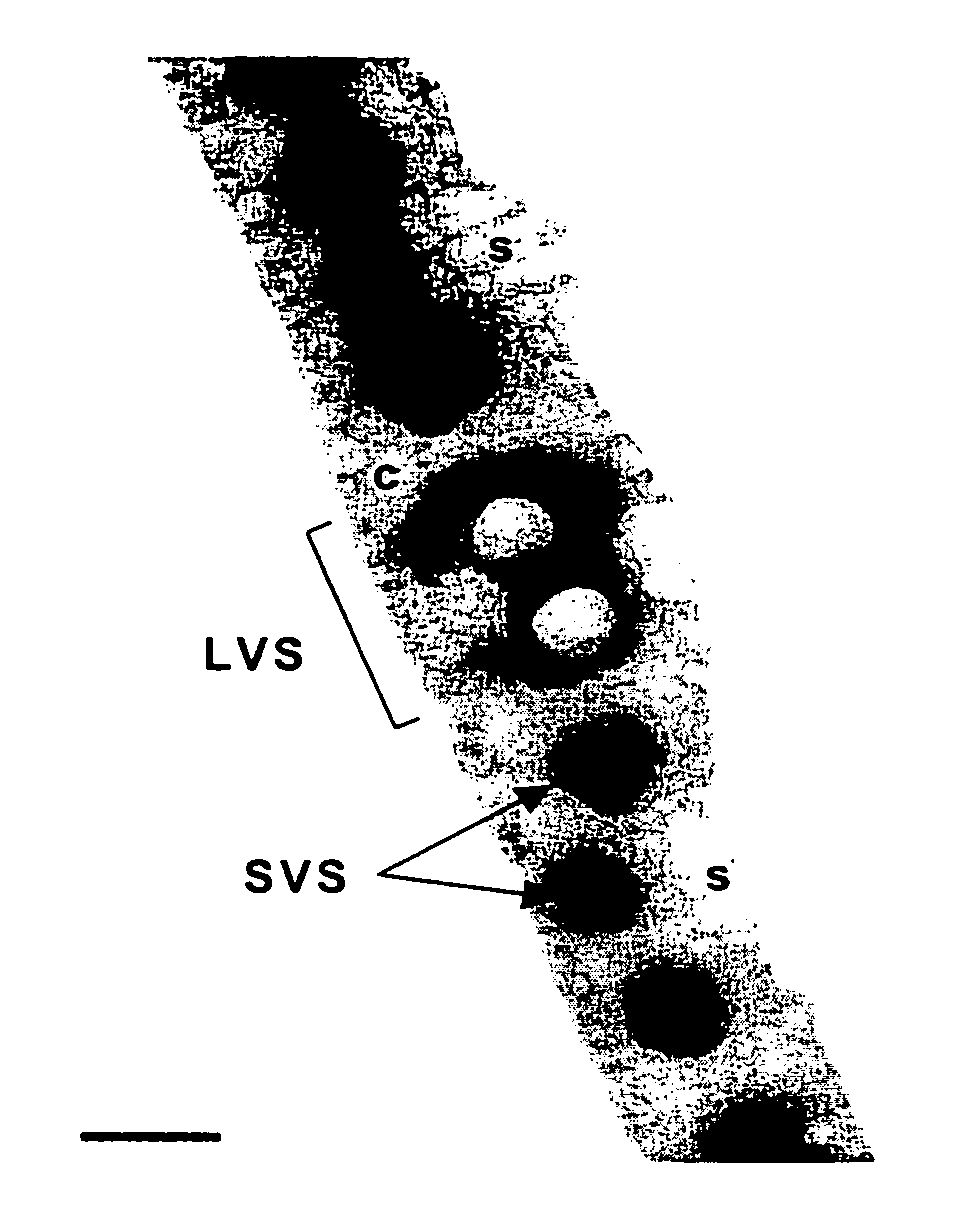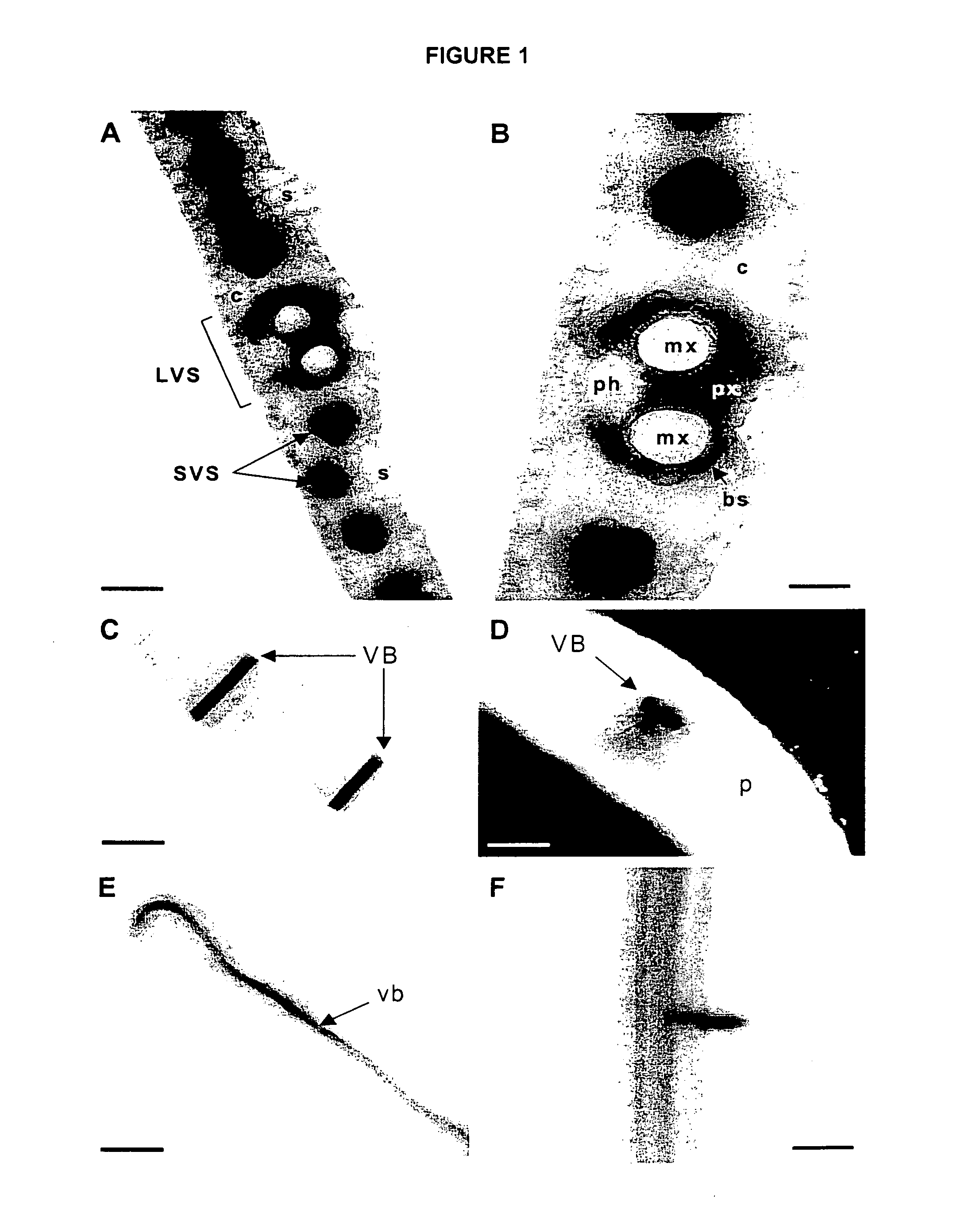Cytokinin oxidase promoter from maize
a technology of cytokinin oxidase and promoter, which is applied in the field of plant molecular biology, can solve the problems of seed abortion, affecting the quality and quantity of seed produced, and restricting developmen
- Summary
- Abstract
- Description
- Claims
- Application Information
AI Technical Summary
Benefits of technology
Problems solved by technology
Method used
Image
Examples
example 1
In Situ Localization of Cytokinin Oxidase mRNA in Selected Maize Tissues
[0093] To determine expression patterns of cytokinin oxidase (cytox) in maize, in situ hybridization was performed using the protocol of Jackson, D. P. (1991) (In situ Hybridization in Plants, Molecular Plant Pathology: A Practical Approach, D. J. Bowles, S. J. Gurr, and M. McPherson, eds. Oxford University Press, England, pp. 63-74). Sense and antisense mRNA probes of about 1 kb corresponding to cytox cDNA were labeled non-isotopically with digoxigenin and incubated with fixed sections of maize tissues from immature ear (7 weeks after planting), kernel at silking (9 weeks after planting), kernels at 8 and 12 days after pollination (DAP), primary root tip at the V6 stage, and premeiotic anthers. Following extensive washing to remove unbound probe, sections were incubated with alkaline phosphatase-conjugated anti-digoxigenin antibody to detect areas of probe hybridization. Cytox mRNA was detected specifically wi...
example 2
Generation of Transgenic Events via Abrobacterium Transformation
[0100] The Agrobacterium strain utilized in this example was modified to contain nucleic acid encoding the cytokinin oxidase promoter and a GUS reporter gene to be expressed in the transformed cells.
[0101] The vectors of this example were constructed using standard molecular biology techniques known to those of ordinary skill in the art. A reporter gene and a selectable marker gene were inserted between the T-DNA borders of a superbinary vector. The reporter gene was the b-glucuronidase (GUS) gene (Jefferson, R. A. et al., 1986, Proc. Natl. Acad. Sci. (USA) 83:8447-8451) into whose coding region was inserted the second intron from the potato ST-LS1 gene (Vancanneyt et al., Mol. Gen. Genet. 220:245-250, 1990), to produce intron-GUS, in order to prevent expression of the gene in Agrobacterium (see Ohta, S. et al., 1990, Plant Cell Physiol. 31(6):805-813). A fragment containing bases 2 to 310 from the terminator of the p...
example 3
Expression of a Cytokinin Oxidase Promoter-Gus Fusion Construct in Transgenic Maize
[0105] The ckx1-2 promoter of SEQ ID NO: 1 was isolated using the Genome Walker™ cloning kit with genomic DNA from the inbred B73. The procedure for promoter isolation is described in the User Manual for the Genome Walker™ cloning kit sold by Clontech Laboratories, Inc., Palo Alto, Calif. (Genome Walker™ User Manual Clontech PT3042-1 version PR68687) The promoter was fused to GUS. Maize embryos were transformed with the ckx1-2 (SEQ ID NO: 1): GUS construct via Agrobacterium. After regeneration, leaf discs of 8-week old T0 plants were assayed for GUS activity. GUS staining was detected in three independent transgenic events and the event showing the strongest signal was used for further analysis. Strong GUS staining was found in the leaf midrib and in small and large vascular strands (FIG. 1A). In the large vascular strands, label was confined to protoxylem and bundle sheath cells (FIG. 1B). No or lit...
PUM
| Property | Measurement | Unit |
|---|---|---|
| Acidity | aaaaa | aaaaa |
Abstract
Description
Claims
Application Information
 Login to View More
Login to View More - R&D
- Intellectual Property
- Life Sciences
- Materials
- Tech Scout
- Unparalleled Data Quality
- Higher Quality Content
- 60% Fewer Hallucinations
Browse by: Latest US Patents, China's latest patents, Technical Efficacy Thesaurus, Application Domain, Technology Topic, Popular Technical Reports.
© 2025 PatSnap. All rights reserved.Legal|Privacy policy|Modern Slavery Act Transparency Statement|Sitemap|About US| Contact US: help@patsnap.com


